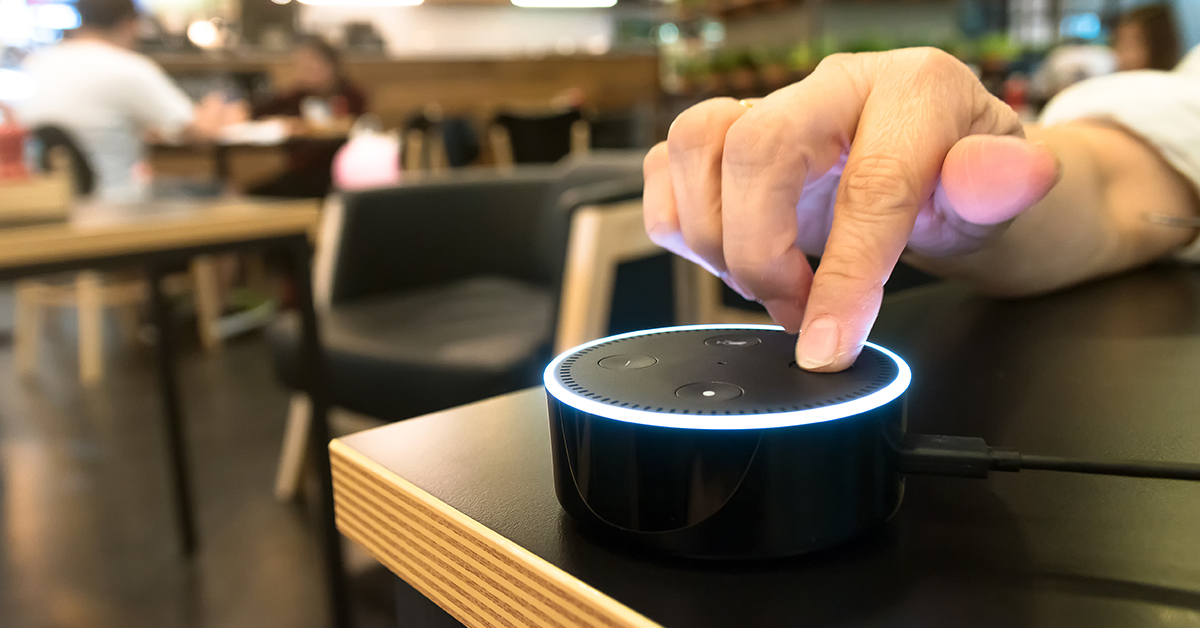Through the development of websites, apps, and smart devices, we now find ourselves in a digital age where uttering the words, “OK Google”, “Hey Siri” and “Alexa…” are more expected than they are unusual.
We can literally watch someone speak to an inanimate object and ask it where they should eat dinner, then have it order an Uber ride to the restaurant it just suggested, while it also turns off the lights and unlocks the smart door as the person heads out of the house. And we don’t even blink twice at all this.
Has the world changed quickly, or what?
Artificial Intelligence is Everywhere
And the world is still changing. Use of Artificial Intelligence is on an upward rise, entering its way into our home life, cars, schools, and the business world.
In fact, Google just made an announcement at the 2018 CES convention in Las Vegas about how their Google Assistant technology is expanding into even more products. It is now available on multiple voice-activated speakers and headphones, as well as smart displays which allow for a visual display. Though it is still behind Amazon’s Alexa, Google Assistant is available on more than 400 million devices.
The new growth of Google Assistant is a representation of the competitive “battle” between companies to make the best use of AI, and to do so quickly. These companies understand that consumers are using AI on a regular basis.
Just how many consumers are using AI? Well, a 2017 study on consumer mobile habits by Deloitte revealed over two-thirds of consumers are already using AI without even knowing it. AI capabilities are used by 68% of smartphone users. And when 82% of consumers in the US now have a smartphone, and 98% of millennials own a smartphone that means that AI’s influence is far-reaching.
A New Player in the Game- Chatbots
The transition from dabbling in AI, to using it for just about everything, isn’t limited to the smart home devices we’ve been talking about. Like a rookie many of us never really saw coming, chatbots are making their own entrance into the game.
Though they’re not really a “new player,” since chatbots existed even before Facebook, through SMS networks like AOL. Remember Smarterchild? Yeah, we all do.
It’s more like the old dorky image of chatbots is getting a makeover that leaves them looking modern, sleek and efficient. And with this new look, chatbots could play a much greater part of the online consumer experience than previously expected.
Take SERPs for example. Bing has recently been experimenting with a chatbot feature directly in organic and paid local search results. Though the feature is mostly still a demo and not available to all users or locations, it shows us how chatbots and search engines could work together in the future.
I was one of the unlucky users that the Bing chatbot wouldn’t work for, but I did some digging and found someone who was able to play around with it.
According this source, the Bing chatbots were a bit difficult to navigate at first, didn’t work for every restaurant searched for, and didn’t work at all when searching for local hotels. But when the bot did work, these were the kinds of questions it was capable of answering:
Show me the directions to your place?
What parking options do you have?
What dishes do you recommend?
How do I reserve a table?
What is your price range?
Are there any discounts?
With past exposure to virtual assistants like Alexa or Amazon Echo, these capabilities might not seem mind-blowing. But for SMBs, chatbots come with some great marketing advantages.
Why Chatbots Are Great For Businesses
1. Not everyone intentionally uses virtual assistants.
I know for me, I don’t own anything like a Google Home or Alexa yet. Sure, I’ve played around a fair bit with the systems of my friends. I ask it all the annoying questions like “What does the fox say?” and “Will you make me a sandwich?” but it hasn’t made me buy one. I’ve had Siri on my phone for years, but I’d hardly call her a close friend. Whereas search engines, I use multiple times a day. A bot popping up offering help while navigating the web is unavoidable, and can reach more consumers than just the ones with the obvious AI assistants.
2. Chatbots are able to be developed across many platforms.
While virtual assistants live in hardware devices such as your smartphone or personal computer, chatbots function in any major chat product like Facebook Messenger, Whatsapp, or SMS. That means marketers can take the website, apps and social media outlets they are already using and easily implement chatbots.
3. They’re cost-efficient.
There are many ways to set up a chatbot and it is inexpensive and fast. Not to mention, it’s only necessary to program a chatbot once and then it can be used wherever you want it by simply turning the channels on.
How Consumers Feel About the Bots
While marketers may love advances in AI and specifically chatbots, it’s important to know how customers feel about them.
A 2017 research study by Eden Agency helps us to do just that.
The study involved 400 consumers across the UK (all of which had previous experience with AI) and looked at their understanding, views and experiences of chatbots and virtual assistants.
Most of the participants were highly likely to interact with bots, and for multiple reasons. Among these reasons, 58% said they would even use a chatbot in an emergency. This level of trust carried over to the finding that only 14% of respondents would find the experience of speaking to a machine unnerving.
On the contrary, consumers aren’t entirely trusting of bot technology. Thirty-four percent showed concerns that bots would make an inaccurate booking or purchase.
In general, the study represented a consumer audience ready, willing and comfortable with chatbots.
As seen by the competitive virtual-assistant market, the uses and advantages of chatbots, and consumer attitudes towards chatbots, it is clear that AI is only going to increase in popularity and use-cases. Businesses that adopt AI technology early and provide their customers with good experiences will have the greatest opportunity to attract consumers while the technology still appears unique and remarkable.









